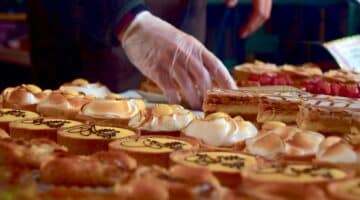Why You’ll See Poppies Everywhere in London This Time of Year

Every year at this time, London is a sea of red. To commemorate the end of the First World War, tradition has it that poppies are sold on the streets everywhere in London.
Practically everyone wears one, and it is almost like a pledge of allegiance. Even soccer players from lands that have no history connected to WWI, for two weeks in November, wear shirts that have the poppy sewn into the team colors.
Newscasters on TV are never seen without a poppy. It’s an amazing sight. Kids pin them on their T-shirts, taxis have them on their front bumper, and trains have huge poppies mounted on the front.
In order to commemorate 100 years from the beginning of WWI, London has put up a sea of ceramic poppies around the moat in the Tower of London.
More than 4 million visitors will have seen them by the time the poppies are removed and returned to the people who bought them. My mum bought one. She even went down to the Tower the other day to see the exhibition. It’s amazing.
The exhibit is called “Blood Swept Lands And Seas Of Red” by ceramic artist Paul Cummins.
The poppies are a symbol made famous by the poem “In Flanders Fields,” written in 1915 by John McCrea, a Canadian soldier.
In Flanders Fields
by John McCrae, May 1915
In Flanders fields the poppies blow
Between the crosses, row on row,
That mark our place; and in the sky
The larks, still bravely singing, fly
Scarce heard amid the guns below.
We are the Dead. Short days ago
We lived, felt dawn, saw sunset glow,
Loved and were loved, and now we lie
In Flanders fields.
Take up our quarrel with the foe:
To you from failing hands we throw
The torch; be yours to hold it high.
If ye break faith with us who die
We shall not sleep, though poppies grow
In Flanders fields.
To find out more about the historic symbolism of the poppy, visit the website for the Tower of London.









